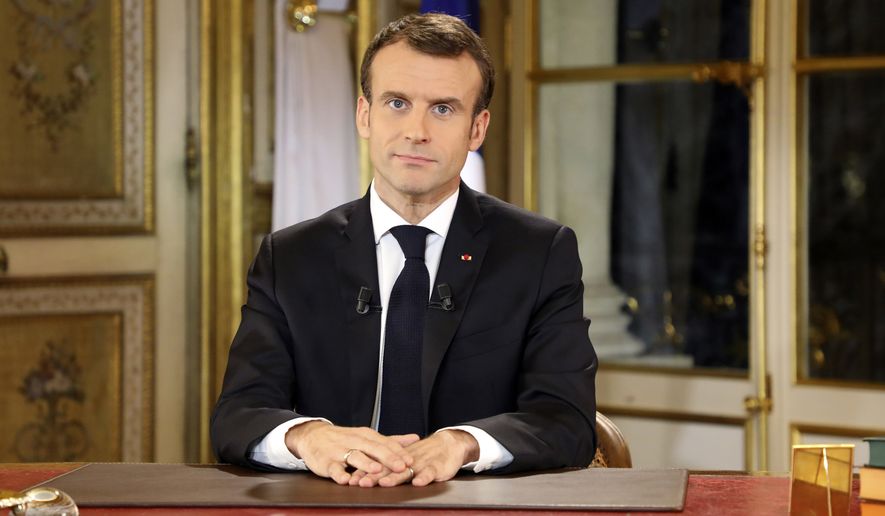OPINION:
Burning cars and breaking shop windows is some people’s idea of a good time, and sometimes the rioters can make a case for a legitimate cause. The French can riot about as well as anyone this side of the Middle East, and they’re angry about how they’re expected to pay what they regard as more than their share of sacrifice.
“I’m prepared to spend Christmas at this traffic circle with my children, and we won’t back down because we have nothing to lose,” one rioter, 41 years old, tells a reporter in Paris. He voted for Emmanuel Macron last year and he has only faded illusions to show for it. “He gave good speeches and I really believed his promises that he would change France. But not any more.”
The wail of the middle class is familiar across the globe, and a grassroots protest in France which began as a spontaneous protest about rising gasoline prices has morphed into an anti-Macron movement. Now the young president has his very own migraine.
His critics, in the street and in many a proper French parlor, say he’s arrogant and wants to be king, posing as the hero who can hold back the tide of nationalism, of which the continent has already seen too much. They say he is actually trying to push people toward an indefinable populism.
The streets have been set adrift in violence, with fringe elements fighting running battles with riot police, museums and even some shops closed and boarded up, and the Macron government warning that thousands of rioters elsewhere “might” come to the capital to “smash” or even “kill.” Rioters have made the “gilets jaunes,” the yellow jackets,” that workers in the streets wear when they must be exposed to traffic, their uniform of the day. Public-opinion polls show Monsieur Macron’s approval rating at 18 percent. Ordinarily, politicians with an approval rating like that are found only in the morgue.
The failure of the French economy is familiar to the leftmost precincts of the West. France has seen a sharp rise in the difference in incomes of the rich and the poor. The top 20 percent of the population earns five times as much as the bottom 20 percent, and the richest 20 percent represents more than 20 percent of the nation’s wealth.
This reverses what the French had experienced in the years after the end of World War II, years of economic growth that stretched across three decades remembered as “les trente glorieuses,” the golden time. But successive left-wing governments sought to improve competition by compressing wage gains, and incomes of low- and middle-class workers stagnated. Soon growth was reckoned at 1 percent annually, or less.
This has led to public opinion dominated by personal disgust with the new president, regarded as a man with no warmth or concern for the poor, and his cold dismissal of constituent concerns, like the time he told an unemployed person to just “cross the road” to find a job, or when he wagged a finger at pensioners, telling them they shouldn’t complain about rising prices cutting into their income. There was predictable outrage when he built a swimming pool at the presidential summer retreat, and bought new furniture for the presidential residence in Paris. He makes everybody’s head hurt, including his own.




Please read our comment policy before commenting.